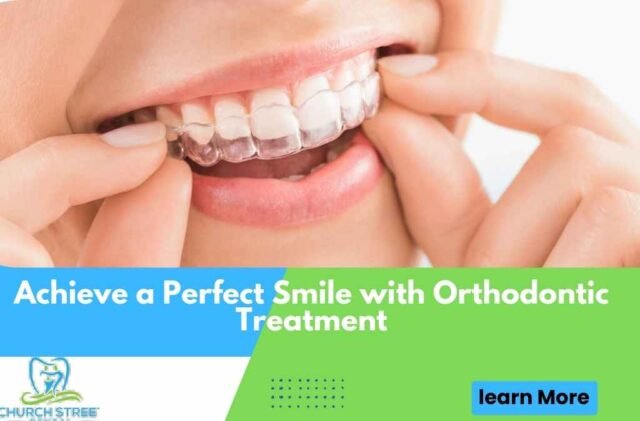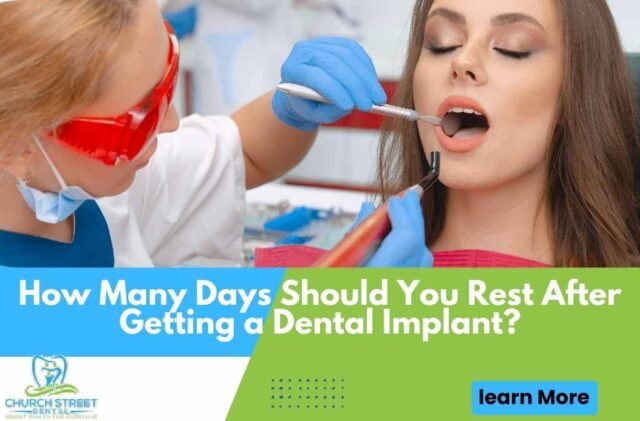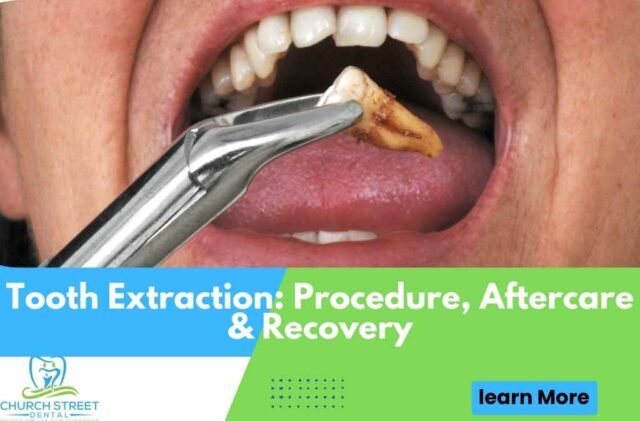Teeth are designed to last a lifetime, but unfortunately, they can sometimes become damaged due to decay, injury, or wear over time. When a tooth becomes severely damaged or decayed, the best option for restoring its function and appearance is often a dental crown. Crowns are a reliable solution to restore damaged teeth, and they offer multiple benefits such as improved appearance, better functionality, and enhanced tooth protection. We will explain to you the reasons why dental crowns are such an effective solution, the types of crowns available, the process of getting a crown, the advantages of using crowns, and much more.
What Are Dental Crowns?
A dental crown is a tooth-shaped cap that is placed over a damaged or weakened tooth to restore its original size, shape, strength, and appearance. Dental crowns are used to protect a tooth from further damage, strengthen it, and even improve its appearance, making it look like a natural tooth again. Crowns can be made from a variety of materials, each offering different benefits and aesthetic outcomes.
Why Are Crowns an Essential Dental Restoration?
Teeth can become compromised in a number of ways—whether it’s through injury, cavities, large fillings, or wear and tear. Crowns offer a variety of benefits to both patients and dentists when it comes to preserving teeth that are too damaged for simple fillings. Here’s why crowns are so important:
Strengthening Weakened Teeth
A weakened tooth—due to decay, injury, or large fillings—might not be able to withstand normal biting or chewing forces. Crowns provide the added strength needed to protect and restore the tooth, thus preventing it from breaking under pressure. Crowns effectively “shield” the tooth from further deterioration.
Restoring Tooth Functionality
Teeth that are damaged or decayed often lose their ability to perform basic functions like biting and chewing. A dental crown restores these functions, allowing you to eat and speak comfortably again.
Improving Appearance
Crowns are made to match the natural color, shape, and size of your teeth, especially when made of porcelain or other aesthetic materials. Crowns can make a huge difference in the overall appearance of your smile, especially when used on visible teeth.
Preventing Further Damage
Crowns can prevent further decay or damage by sealing the tooth. Once placed, the crown protects the remaining tooth structure, preventing bacteria from entering and causing further complications.
Long-Term Durability
When properly maintained, dental crowns can last for many years—sometimes even a lifetime, depending on the material used. Their durability and longevity make them a popular choice for restoring damaged teeth.
Types of Dental Crowns
There are several types of dental crowns, and the best one for you depends on factors such as the location of the tooth, its function, and your aesthetic preferences. Let’s explore the most common types of crowns.
Porcelain Crowns (All-Ceramic)
Porcelain crowns are a popular choice for those who want a natural-looking restoration. These crowns are made entirely from ceramic material and are often used for front teeth or highly visible areas. Porcelain crowns are designed to blend seamlessly with your natural tooth color, making them ideal for enhancing your smile.
Pros:
- Best for cosmetic purposes (front teeth)
- Matches the natural color of teeth
- Metal-free, which is a good option for people with metal sensitivities
Cons:
- Can be less durable than metal crowns (can chip or crack)
- More expensive than some other crown options
Porcelain-Fused-to-Metal (PFM) Crowns
PFM crowns combine the strength of metal with the natural appearance of porcelain. The metal base of the crown provides durability, while the porcelain exterior offers a lifelike look. PFM crowns are often used for molars or teeth that require both strength and aesthetics.
Pros:
- Stronger and more durable than all-porcelain crowns
- Ideal for back teeth
- Offers a balance between aesthetics and functionality
Cons:
- The metal base can show as a dark line at the gum line (especially with gum recession)
- Requires more tooth structure to be removed compared to all-ceramic crowns
Metal Crowns (Gold or Alloys)
Metal crowns are made from various metal alloys, such as gold or platinum, and are among the most durable types of crowns. These are typically used for back teeth where appearance is not as important as strength and longevity.
Pros:
- Extremely durable and resistant to wear
- Less likely to fracture or chip
- Requires minimal removal of tooth structure
Cons:
- Not aesthetic (not suitable for visible teeth)
- Expensive (especially if made of gold)
Zirconia Crowns
Zirconia crowns are made from a highly durable material called zirconium oxide, which is a type of ceramic. Zirconia crowns are becoming increasingly popular because they combine the benefits of both metal and porcelain. They are durable, strong, and aesthetically pleasing.
Pros:
- Stronger than porcelain and less likely to fracture
- Can be used for both front and back teeth
- Lifelike appearance, especially when layered with porcelain
Cons:
- Can be more expensive than other types
- Requires a skilled dentist for proper fitting
Resin Crowns
Resin crowns are typically used as temporary solutions for patients awaiting permanent restorations. These are often made of composite materials, which are less durable than other crown materials.
Pros:
- Affordable and easy to place
- Used as a temporary solution before permanent crowns
Cons:
- Less durable and prone to wear
- Not suitable for long-term use
How Do Crowns Improve Oral Health?
Dental crowns offer various health benefits by restoring a damaged tooth’s structure and function. Let’s explore some of the health improvements that come with crown treatment:
Protection Against Infection
By covering a decayed or cracked tooth, crowns seal out harmful bacteria, preventing further tooth decay or infection. This is especially beneficial after a root canal procedure, as it protects the tooth from exposure to the oral environment.
Preventing Tooth Loss
When a tooth becomes weak or compromised, the risk of tooth loss increases. Crowns provide much-needed protection, allowing the tooth to stay intact and functional for a much longer time. By restoring the tooth, you can often avoid extraction and the need for dental implants or bridges.
Improving Chewing and Biting
Damaged teeth can make chewing difficult or painful. A crown restores the full functionality of the tooth, enabling you to bite and chew food normally again. This can improve your ability to eat a wide variety of foods, which is important for overall health and nutrition.
The Dental Crown Procedure: What to Expect
Getting a dental crown typically requires two visits to the dentist. Here’s a step-by-step overview of what you can expect:
Step 1: Consultation and Examination
During your first visit, the dentist will examine the damaged tooth and take X-rays to assess the extent of the damage. If a crown is deemed necessary, the dentist will discuss your options for material types and help you decide the best choice based on your needs.
Step 2: Tooth Preparation
Before placing the crown, the tooth will need to be reshaped. This may involve removing some of the tooth structure to ensure the crown fits snugly over it. If the tooth is severely decayed or damaged, a filling may be added to build up the structure before the crown is placed.
Step 3: Impression and Temporary Crown
Once the tooth is prepared, the dentist will take an impression of the tooth and surrounding area. This impression is sent to a dental lab, where the permanent crown will be made. While waiting for the permanent crown, a temporary crown will be placed to protect the tooth.
Step 4: Fitting the Permanent Crown
Once your permanent crown is ready, the dentist will remove the temporary crown and place the permanent one. The dentist will check the fit, make necessary adjustments, and ensure that the crown aligns properly with your bite. Once the crown fits well, it will be permanently cemented in place.
Aftercare for Dental Crowns
Taking care of your new crown is essential for ensuring its longevity. Here are some aftercare tips:
Maintain Good Oral Hygiene
Brush and floss regularly to prevent plaque buildup around the crown. Use non-abrasive toothpaste to avoid damaging the crown.
Avoid Hard Foods
While crowns are durable, they are not invincible. Avoid chewing on hard foods like ice, nuts, or hard candy, as these could damage the crown or cause it to break.
Attend Regular Check-Ups
Visit your dentist regularly for check-ups and cleanings. Your dentist will check the fit of the crown and make sure there are no issues with your oral health.
How Long Do Dental Crowns Last?
Dental crowns are designed to last many years, with an average lifespan of 10 to 15 years. However, the lifespan of a crown can vary depending on the material used and how well you care for your teeth. Some crowns, like those made from porcelain or zirconia, may last even longer when properly maintained.
Conclusion
Dental crowns are one of the most effective and reliable solutions for restoring damaged or weakened teeth. Whether you need to cover a tooth with extensive decay, a cracked tooth, or a post-root canal restoration, a crown provides strength, durability, and an improved appearance. With multiple material options such as porcelain, metal, and zirconia, crowns offer a solution that fits both functional and aesthetic needs. If you’re looking to restore your damaged teeth and improve your smile, consider visiting Church Street Dental, Dentist in Chicopee, MA. Our experienced team of dental professionals will guide you through the process of selecting the best crown for your needs and ensure you receive the highest standard of care.






